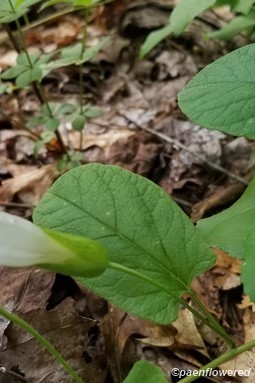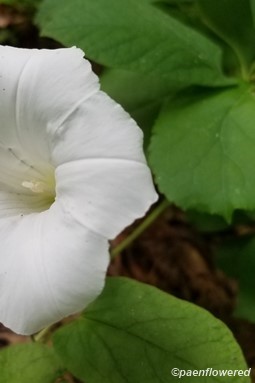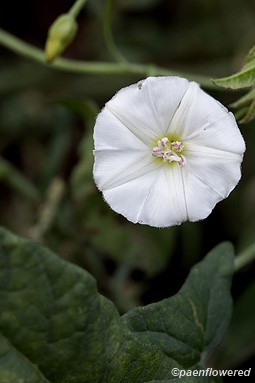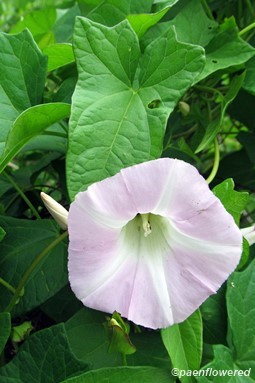Convolvulus arvensis
A weedy European weed with white or pinkish flowers
Convolvulus arvensis field bindweed
This Eurasian member of the morning-glory family has been introduced to North America. It is similar to the hedge bindweed (C. sepium), but has smaller leaves (1-2 inches) and less tapering. Like related species, the field bindweed is a perennial trailing or twining vine with leaves attached in alternate fashion along the stem. Usually, the leaves are triangular in shape with lobes that point outwards, but may vary. The trumpet-shaped flowers are less than one inch long and can either be white or pink in color. Each flower only lasts for one day. The calyx is not enclosed in bracts, but there are two small bracts on the flower stalk.
This species grows in fields and waste places throughout much of North America. It grows along the ground or climbs over shrubs, walls, compost heaps and building stones. It blooms from May to September. The fruit is 1/8 in diameter and brown in color. It contains two seeds and is often eaten by birds. One plant can produce up to 500 seeds. The seeds can remain viable in the soil for decades. It can be a troublesome weed, growing on and engulfing garden vegetation and crops. Its deep root system makes it difficult to eradicate.
Habitat & Range
Grows in fields and on roadsides, waste grounds, and other man-disturbed habitats.
Present throughout the state.
Range: Throughout North America.
Wetland code: Not classified
Phenology
Flowers May to early October.










Comments
Have you spotted this plant in your area? We'd love to hear about your experience! Share your comments or questions about the plant below. Comments are moderated before posting.